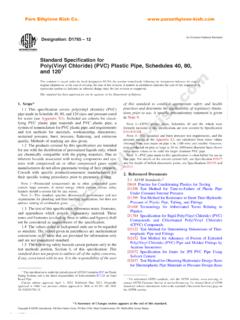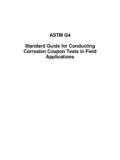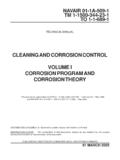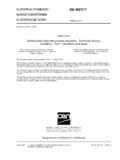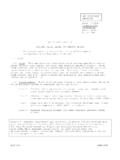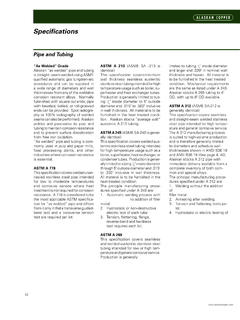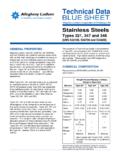Transcription of Part 1: Bolts, screws and studs www.parsethylene-kish
1 Provided by : BS EN ISO3506-1:2009 ICS COPYING WITHOUT BSI PERMISSION EXCEPT AS PERMITTED BY COPYRIGHT LAWBRITISH STANDARDM echanical propertiesof corrosion-resistantstainless steelfastenersPart 1: Bolts, screws and studsLicensed Copy: The Open University Library, The Open University Library, 07/10/2010 08:13, Uncontrolled Copy, (c) by : This British Standardwas published under theauthority of the StandardsPolicy and StrategyCommittee on 31 December2009. BSI 2009 ISBN 978 0 580 58916 4 Amendments/corrigenda issued since publicationDateCommentsBS EN ISO 3506-1:2009 National forewordThis British Standard is the UK implementation of EN ISO 3506-1 supersedes BS EN ISO 3506-1:1998 which is UK participation in its preparation was entrusted to TechnicalCommittee FME/9/1, Mechanical properties of list of organizations represented on this committee can be obtained onrequest to its publication does not purport to include all the necessary provisionsof a contract.
2 Users are responsible for its correct with a British Standard cannot confer immunityfrom legal Copy: The Open University Library, The Open University Library, 07/10/2010 08:13, Uncontrolled Copy, (c) by : EUROPEAN STANDARD NORME EUROP ENNE EUROP ISCHE NORM EN ISO 3506-1 November 2009 ICS Supersedes EN ISO 3506-1:1997 English Version Mechanical properties of corrosion-resistant stainless steel fasteners - part 1: Bolts, screws and studs (ISO 3506-1:2009) Caract ristiques m caniques des l ments de fixation en acier inoxydable r sistant la corrosion - Partie 1: Vis et goujons (ISO 3506-1:2009) Mechanische Eigenschaften von Verbindungselementen aus nichtrostenden St hlen - Teil 1: Schrauben (ISO 3506-1:2009) This European Standard was approved by CEN on 24 October 2009.
3 CEN members are bound to comply with the CEN/CENELEC Internal Regulations which stipulate the conditions for giving this European Standard the status of a national standard without any alteration. Up-to-date lists and bibliographical references concerning such national standards may be obtained on application to the CEN Management Centre or to any CEN member. This European Standard exists in three official versions (English, French, German). A version in any other language made by translation under the responsibility of a CEN member into its own language and notified to the CEN Management Centre has the same status as the official versions.
4 CEN members are the national standards bodies of Austria, Belgium, Bulgaria, Cyprus, Czech Republic, Denmark, Estonia, Finland, France, Germany, Greece, Hungary, Iceland, Ireland, Italy, Latvia, Lithuania, Luxembourg, Malta, Netherlands, Norway, Poland, Portugal, Romania, Slovakia, Slovenia, Spain, Sweden, Switzerland and United Kingdom. EUROPEAN COMMITTEE FOR STANDARDIZATION COMIT EUROP EN DE NORMALISATION EUROP ISCHES KOMITEE F R NORMUNG Management Centre: Avenue Marnix 17, B-1000 Brussels 2009 CEN All rights of exploitation in any form and by any means reserved worldwide for CEN national Members.
5 Ref. No. EN ISO 3506-1:2009: ELicensed Copy: The Open University Library, The Open University Library, 07/10/2010 08:13, Uncontrolled Copy, (c) by : BS EN ISO 3506-1:2009EN ISO 3506-1:2009 (E) 3 Foreword This document (EN ISO 3506-1:2009) has been prepared by Technical Committee ISO/TC 2 "Fasteners" in collaboration with Technical Committee CEN/TC 185 Fasteners , the secretariat of which is held by DIN. This European Standard shall be given the status of a national standard, either by publication of an identical text or by endorsement, at the latest by May 2010, and conflicting national standards shall be withdrawn at the latest by May 2010.
6 Attention is drawn to the possibility that some of the elements of this document may be the subject of patent rights. CEN [and/or CENELEC] shall not be held responsible for identifying any or all such patent rights. This document supersedes EN ISO 3506-1:1997. According to the CEN/CENELEC Internal Regulations, the national standards organizations of the following countries are bound to implement this European Standard: Austria, Belgium, Bulgaria, Cyprus, Czech Republic, Denmark, Estonia, Finland, France, Germany, Greece, Hungary, Iceland, Ireland, Italy, Latvia, Lithuania, Luxembourg, Malta, Netherlands, Norway, Poland, Portugal, Romania, Slovakia, Slovenia, Spain, Sweden, Switzerland and the United Kingdom.
7 Endorsement notice The text of ISO 3506-1:2009 has been approved by CEN as a EN ISO 3506-1:2009 without any modification. Licensed Copy: The Open University Library, The Open University Library, 07/10/2010 08:13, Uncontrolled Copy, (c) by : BS EN ISO 3506-1:2009 ISO 3506-1:2009(E) ISO 2009 All rights reserved iii Contents Page Foreword ..iv 1 Scope .. 1 2 Normative 2 3 2 4 Designation, marking and finish .. 3 Designation .. 3 Marking .. 4 Finish .. 6 5 Chemical composition .. 6 6 Mechanical 7 7 Testing .. 9 Test programme .. 9 Test 10 Annex A (normative) External thread Calculation of stress area.
8 14 Annex B (informative) Description of the groups and grades of stainless steels .. 15 Annex C (informative) Stainless steel composition specifications .. 18 Annex D (informative) Stainless steels for cold heading and 21 Annex E (informative) Austenitic stainless steels with particular resistance to chloride induced stress corrosion .. 23 Annex F (informative) Mechanical properties at elevated temperatures; application at low temperatures .. 24 Annex G (informative) Time-temperature diagram of intergranular corrosion in austenitic stainless steels, grade A2 (18/8 steels).. 25 Annex H (informative) Magnetic properties for austenitic stainless steels.
9 26 27 Licensed Copy: The Open University Library, The Open University Library, 07/10/2010 08:13, Uncontrolled Copy, (c) by : BS EN ISO 3506-1:2009 ISO 3506-1:2009(E) iv ISO 2009 All rights reserved Foreword ISO (the International Organization for Standardization) is a worldwide federation of national standards bodies (ISO member bodies). The work of preparing International Standards is normally carried out through ISO technical committees. Each member body interested in a subject for which a technical committee has been established has the right to be represented on that committee.
10 International organizations, governmental and non-governmental, in liaison with ISO, also take part in the work. ISO collaborates closely with the International Electrotechnical Commission (IEC) on all matters of electrotechnical standardization. International Standards are drafted in accordance with the rules given in the ISO/IEC Directives, part 2. The main task of technical committees is to prepare International Standards. Draft International Standards adopted by the technical committees are circulated to the member bodies for voting. Publication as an International Standard requires approval by at least 75 % of the member bodies casting a vote.

